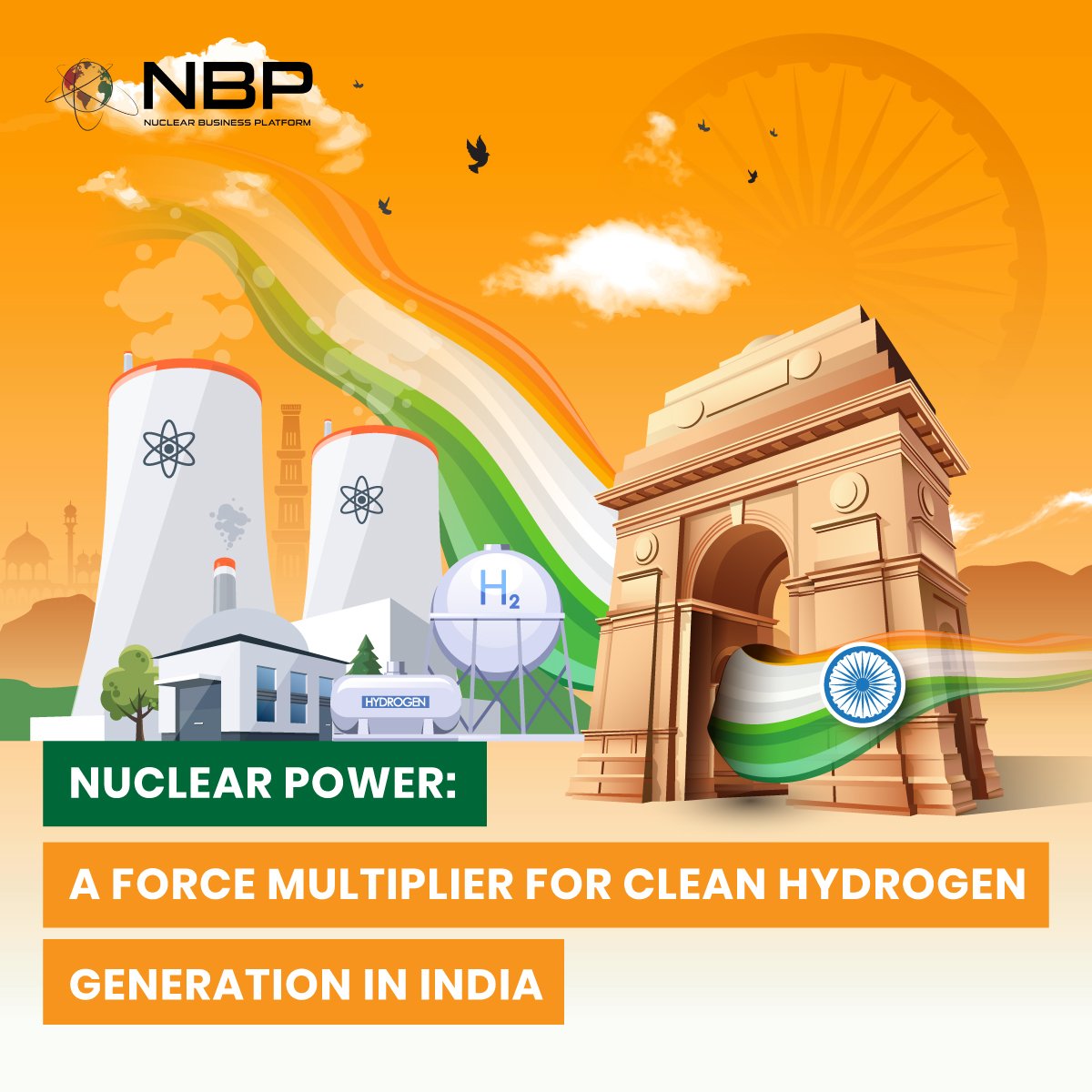Nuclear Power: A Force Multiplier for Clean Hydrogen Generation in India
India is placing a significant emphasis on clean hydrogen generation, with nuclear hydrogen production poised to revolutionize the country's pathway to hydrogen energy. Under the National Green Hydrogen Mission, India targets a green hydrogen production capacity of 5 million metric tonnes annually by 2030, forming a vital component of its strategy for energy independence by 2047 and achieving Net Zero by 2070. With projections of attracting over $1.08 trillion USD in investments and creating 0.6 million jobs, along with substantial reductions in greenhouse gas emissions, this mission presents an unparalleled opportunity for companies engaged in clean hydrogen generation.
Hydrogen Production Technologies
Hydrogen production encompasses various technologies, each offering unique advantages in terms of efficiency and environmental impact. Electrolysis, a widely adopted method, involves splitting water into hydrogen and oxygen using electricity. Cold electrolysis, often leveraging off-peak capacity, consumes around 50-55 kWh/kg of hydrogen. Low-temperature steam electrolysis utilizes both heat and electricity from nuclear reactors, while high-temperature steam electrolysis, facilitated by nuclear reactors, ensures efficient water molecule splitting.
Thermochemical production presents another avenue, particularly through high-temperature processes. Advanced high-temperature reactors enable direct utilization of nuclear heat for decomposing water into hydrogen and oxygen, offering a promising zero-carbon hydrogen production pathway.
In the realm of advanced nuclear reactors tailored for hydrogen production, high-temperature reactors (HTRs) stand out. Operating at elevated temperatures, HTRs are well-suited for thermochemical hydrogen production. Designs like the Pebble Bed Modular Reactor (PBMR) and Very High-Temperature Reactor (VHTR) exhibit efficient heat transfer capabilities, further enhancing the feasibility of thermochemical processes. These advancements in nuclear reactor technology pave the way for sustainable and scalable hydrogen production, with nuclear energy playing a crucial role in driving the transition towards a low-carbon future.
Global Companies and India’s Promise
India invites global companies to participate in joint ventures. Collaborations can focus on research, technology transfer, and scaling up nuclear-driven hydrogen projects. The government is seeking $26bn in private investment for its nuclear energy industry.
India’s regulatory framework encourages private investment in nuclear energy. Companies can explore partnerships with Indian entities for sustainable hydrogen ventures.
India’s growing demand for clean hydrogen provides a vast market. Global companies can leverage India’s infrastructure and skilled workforce.
The Department of Atomic Energy (DAE) is pioneering the conversion of two experimental reactors into pilot plants for green hydrogen production using nuclear power. Among them is the Indian High-Temperature Reactor (IHTR) developed by the Bhabha Atomic Research Center.
Advanced Nuclear Reactors
Several leading companies are spearheading the development of advanced nuclear reactor technologies tailored for hydrogen production:
NuScale Power's small modular reactor (SMR) technology offers inherent safety features and scalability, ideal for diverse applications, including hydrogen production.
TerraPower's innovative traveling wave reactor (TWR) concept boasts high efficiency and fuel utilization rates, potentially revolutionizing the economics of hydrogen production.
X-energy's high-temperature gas-cooled reactor (HTGR) technology excels in generating high-temperature heat, specifically suited for steam electrolysis, thus laying a robust foundation for sustainable hydrogen production.
China National Nuclear Corp. (CNNC) has pioneered the development of the high-temperature gas-cooled modular pebble bed (HTR-PM) reactor. Recent tests indicate that with further advancements pushing temperatures to 950°C, the reactor's heat output could facilitate significant-scale hydrogen production.
Korea Hydro & Nuclear Power (KHNP) partnered with TerraPower to advance the demonstration and commercialization of Natrium, TerraPower's sodium-cooled fast reactor integrated energy system. The Natrium reactor's high operating temperatures make it ideal for high-temperature steam electrolysis, a method for producing hydrogen.
Russia holds a prominent position in fast neutron reactor technology worldwide. These reactors can function at elevated temperatures, making them well-suited for hydrogen production through thermochemical cycles or high-temperature steam electrolysis.
Generation IV nuclear reactors for hydrogen production
Gen IV nuclear reactors are engineered with the specific purpose of generating electricity with minimal emissions and generating high-temperature heat. This heat can play a crucial role in decarbonizing numerous energy-intensive sectors, including the production of hydrogen. Among the Gen IV reactors, four distinct types stand out for their suitability in facilitating thermochemical hydrogen production.
Gas-cooled fast reactor (GFR)
Lead-cooled fast reactor (LFR)
Molten salt reactor (MSR)
Very high-temperature gas reactor (VHTR)
The recent Nuclear Energy Agency (NEA) report emphasizes the cost-effectiveness of nuclear power in producing low-carbon hydrogen. Nuclear energy emerges as a competitive option for large-scale low-carbon hydrogen production, with amortized reactors in long-term operation enabling production costs below USD 2 per kilogram. Moreover, owing to the reliable operation, better efficiency and firm nature, the cost of hydrogen from new nuclear reactors is far competitive as compared with variable renewables (such as solar and wind) across most regions globally. In India, nuclear energy stands poised to offer low-cost hydrogen and energy to the nation's industrial centers. The inherent stability and power density of nuclear technology enable the continuous and sizable production of low-carbon hydrogen and heat. Furthermore, nuclear power presents opportunities to optimize the infrastructure costs associated with hydrogen delivery and capitalize on co-location with challenging-to-decarbonize industrial activities.
The 5th edition of India Nuclear Business Platform (INBP) will take place in Mumbai this 19-20 November 2024. The industry meeting will feature all the officials and players across the Indian nuclear supply chain. For more information on this meeting including exhibition opportunities, click here



